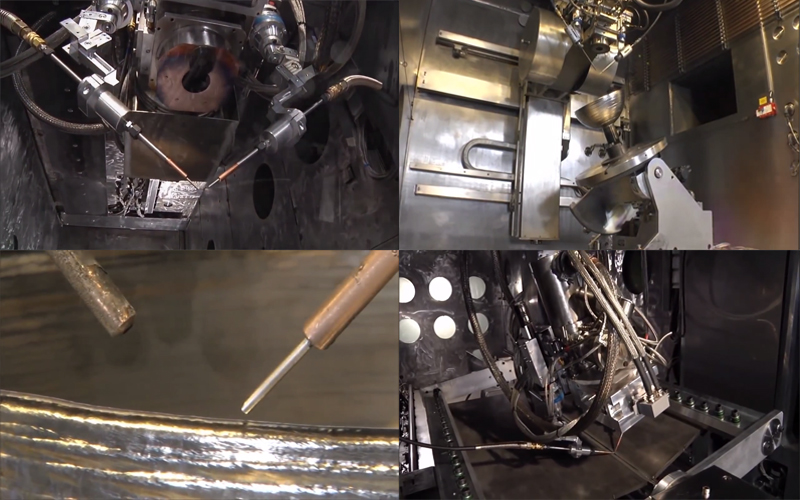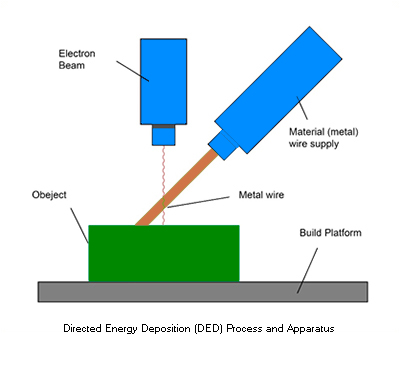Directed Energy Deposition (DED) is a 3D printing technology used specifically to create 3D models from metals and alloys. The technique can be applied to make 3D parts or objects from polymers, glass or ceramics, but it is not popular for this. This technique is commonly used for repairing existing 3D models constructed of metal or alloy. The technique is often used to add extensions to existing metal models.
The typical apparatus for directed energy deposition 3D printing consists of a head for supplying strand of material that can move along multiple axes and an electron beam projector or high-power laser beam projector that melts the strand. powered by directing high-power radiation. Due to the use of laser beam, Directed Energy Deposition is also known by the names – Laser Engineered Lattice Shaping, 3D Laser Cladding, and Directed Light Fabrication. Using metal wire or powder as a power source, the technology is also sometimes referred to by the term – direct metal deposition.

The DED process is similar to material extrusion, but in the DED printing method, the nozzle that delivers the material particles or yarn is mounted on a multi-axis arm. Thus, in contrast to material extrusion, the feed supply is not restricted to a specific axis. The model is built on a surface (which is not necessarily a flat platform) from bottom to top. The metal wire or powder feed nozzle can project the feed supply onto the target surface from any angle as the multi-axis arm allows four- or five-axis movement. The laser beam is directed at the blown metal powder immediately after it is deposited on the target surface. Therefore, the deposition of metallic particles and their melting to fuse together occurs coherently. The shape of the model is controlled by controlling the feed rate and the angle from which the metal wire or particles are deposited on the surface. The deposition of the material, its fusion and solidification on the previous layer or target surface is done layer by layer.

The main advantage of DED for manufacturing and repairing 3D models is its precision and high-resolution microstructure. The granular structure of the deposited metal wire or powder can be controlled to a large extent, which allows the fabrication of fine parts of 3D parts. However, the process lacks speed and can sometimes even require post-processing. The limited choices of materials for use in the directed energy deposition method is another limitation. The process also does not appear to have room for further evolution, as is the case with other fusion-based manufacturing processes. Due to the limited scope of any advancement, DED is not considered a 3D printing technology for conventional industrial productions.
The technology is mainly used to manufacture models and parts made of Titanium, Tantalum and Cobalt Chrome. The process is not preferred for glass, ceramic or plastic models. This is the reason why the use of the Directed Energy Deposition method is limited to the aerospace and automotive sectors.
Electron Beam Additive Manufacturing (EBAM) is Sciaky's trademarked DED solution. Sciaky is a large technology company that provides solutions for industrial metal 3D printing.
In the next article, another 3D printing process – Material blasting will be discussed.

